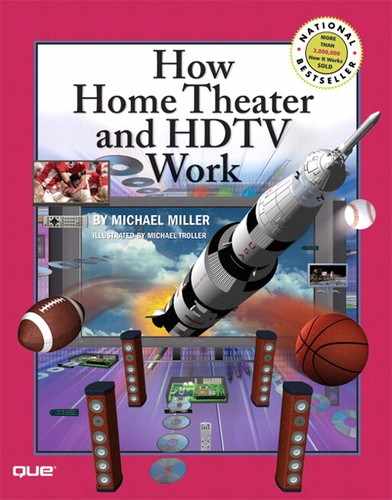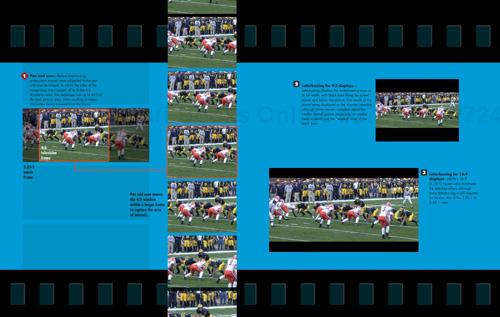
Originally, all motion pictures were projected on a squarish screen with an aspect ratio of 4:3—which means that if a screen is four units of measurement wide, it’s also three units tall. (Another way to express this aspect ratio is 1.33:1, meaning the width is 1.33 times the height.) When television was first developed, it adopted this same 4:3 aspect ratio.
When the movie industry began to feel threatened by the rise of television in the 1950s, Hollywood responded by producing films in various widescreen formats, which better represented the wide human field of vision. These formats—Panavision, Cinemascope, and the rest—provided a much wider picture than that presented by television’s “little square box,” with aspect ratios ranging from 1.66:1 to 2.76:1. In the widest of these formats, the picture is almost three times as wide as it was tall. How, then, does one display widescreen movies on a non-widescreen television?
There are two ways this can work. The most common, until recently, is for a technician to “pan and scan” the narrower television image area over the movie’s image, cutting off the edges of the widescreen picture. The result isn’t always satisfactory, however, because it often cuts off important parts of the picture and definitely interferes with the way the director wanted the movie presented.
A more recent approach is to present the movie at its full width, which leaves some unused areas at the top and bottom of your television screen. This approach, called letterboxing, displays the widescreen movie in a strip across the center of your screen, with long black bars above and below the movie image.
A better solution is to use a widescreen television display, like the 16:9 (1.78:1) aspect ratio screens used in today’s latest HDTV sets. With this aspect ratio, widescreen movies that use the common 1.85:1 ratio can be displayed on a screen with little or no letterboxing; even the wider 2.35:1 movies fit better on a screen with a 1.78:1 ratio!




